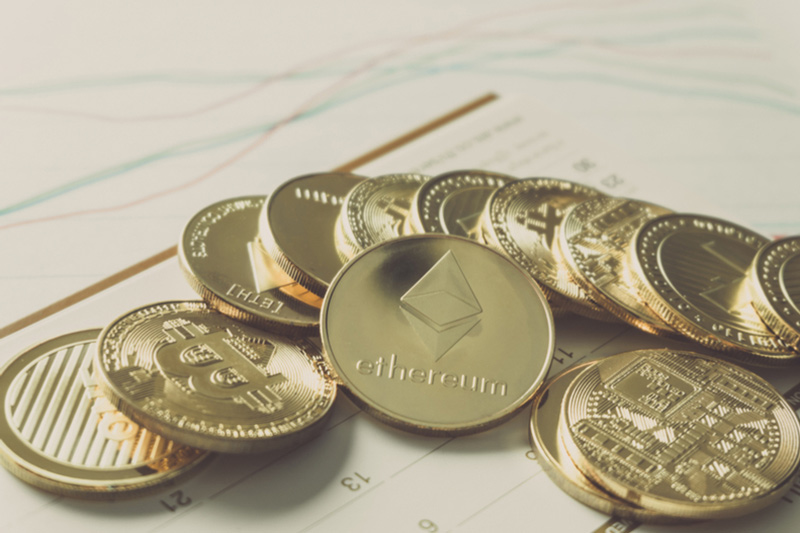Decentralized finance (DeFi) has seen immense innovation in recent years across lending, trading, derivatives, and more without requiring traditional financial intermediaries. However, issues like scalability and usability constrain mainstream adoption. This is where Hydra Chain comes in - a layer 1 blockchain built specifically for usable real-world applications, enhanced security, and an improved user experience.
At Hydra's core is its native staking token HYDRA, which powers network security and enables passive income for participants. Now, Hydra is primed to strengthen its DeFi capabilities with LYDRA, a liquid derivative token allowing HYDRA stakers to also access liquidity for other activities.
The newly introduced LYDRA/HYDRA liquidity pool on Hydra's decentralized exchange (DEX) marks a significant milestone that unlocks fresh utility for both tokens. By facilitating on-chain trades between the assets, the pool supports price discovery for the still-nascent LYDRA while granting HYDRA holders another avenue to earn yields. Beyond attractive incentives for liquidity providers, the pairs open up innovations like leveraged staking and multi-chain arbitrage.
With this boost to Hydra's DeFi ecosystem, LYDRA and HYDRA possess immense potential for driving user growth while advancing real-world blockchain adoption. The liquidity pool accelerates this vision by expanding the possibilities for both tokens and the users that wield them.
Understanding Hydra Chain and LYDRA
Hydra Chain is a distinctive blockchain platform, conceived with principles of permissionless access, unconditional decentralization, and autonomous design. It amalgamates key features from Bitcoin, Ethereum, Qtum, and BlackCoin. From Bitcoin, it inherits a secure architecture and the UTXO model; Ethereum contributes its Virtual Machine and smart contract functionality; Qtum offers decentralized governance protocols; and BlackCoin brings its version 3 Proof of Stake mechanism.
Hydra’s robust technical architecture offers industry-leading transaction speeds and low fixed fees to power contract operations. $HYDRA also facilitates staking and governance rights to contentiously improve the network. These capabilities drive adoption from projects like LockTrip, GoMeat, and more.
Now, Hydra moves to further enhance its offering with LYDRA – “Liquid HYDRA”. LYDRA is a protocol-issued liquidity derivative enabling $HYDRA stakers to unlock additional utility. By locking up HYDRA, users can mint LYDRA at a 1:1 ratio to retain principal staking benefits while freely utilizing the LYDRA for other activities like trading or lending. Then when desired, LYDRA can be burned to unlock the staked HYDRA again.
This breakthrough unlocks two crucial advantages. First, $HYDRA stakers gain flexibility in engaging with DeFi without giving up staking income. Second, by utilizing price differences between the assets, innovative strategies like leveraged staking become possible to boost yields. As the first on-chain liquidity pool for the LYDRA derivative, the new LYDRA/HYDRA DEX pool paves the way for users to enjoy these benefits in full.
The key innovations by the Hydra developers continue placing it at the frontier of blockchain usability and adoption. LYDRA builds on this legacy by expanding the potential for its vibrant ecosystem and user base.
The LYDRA/HYDRA Liquidity Pool on Hydra DEX
The pool operates similarly to platforms like Uniswap or PancakeSwap to facilitate swapping between the assets. Liquidity providers add an equal value of both tokens into the pool to mint LP tokens. Asset ratios then dynamically adjust based on market activity, with prices discovered through the pooled reserves.
However, unique advantages stem from the direct collateral relationship between LYDRA and HYDRA. For instance, the pool establishes a transparent on-chain reference price for LYDRA to evolve beyond over-the-counter trade limitations.
More broadly, the launch unlocks newfound utility for both tokens and their users. With direct LYDRA liquidity, HYDRA stakers can optimize yields via leveraged staking strategies without relying on external counterparties. Sophisticated traders can execute multi-chain arbitrage across Ethereum and Hydra depending on price differences. The interchange between assets also strengthens Hydra’s internal ecosystem.
For DeFi broadly, the pool serves as a prototype for generating liquidity derivatives to improve capital efficiency. By fractionally unlocking staked assets without reducing security, new pool models can redistribute dormant value. The mechanisms introduced by Hydra effectively balance previously conflicting incentives between different stakeholders in a decentralized architecture.
In the Hydra ecosystem, while the LYDRA/HYDRA liquidity pool does not have its own incentive program, the platform offers liquidity mining incentives for several other pairs. These include:
Stablecoin Pools:
-
2,000 HYDRA/month for USDC/USDT (0.05% fee rate)
-
2,000 HYDRA/month for USDC/DAI (0.05% fee rate)
Lydra Pools:
-
5,000 HYDRA/month for USDC/LYDRA (0.30% fee rate)
-
5,000 HYDRA/month for ETH/LYDRA (0.30% fee rate)
-
5,000 HYDRA/month for WBTC/LYDRA (0.30% fee rate)
High Correlation Pools:
-
3,000 HYDRA/month for WBTC/ETH (0.30% fee rate).
These incentives are specifically designed to deepen liquidity and encourage participation in these pairs. For those interested in engaging with these liquidity mining opportunities, detailed information and guidelines are available in the HydraChain Liquidity Mining Guide.
Future Outlook and Challenges
With the resounding success of the LYDRA/HYDRA pool as a proof of concept, Hydra is wasting no time in advancing integration across ecosystem partners and layer 2 solutions. These bridges allow the derivatives model to improve capital efficiency at a broader scale. Other exchanges and DeFi platforms can adopt the template.
However, users should be cognizant of external risks like smart contract vulnerabilities as well as financial risks from price volatility. While the asset correlation limits impermanent loss, it does not eliminate it fully. Users need to balance yield opportunity with the potential downside. Regulatory jurisdiction also remains an open-ended question for tokenized derivative markets.
Nonetheless, the launch cements the central role LYDRA and Hydra more broadly will play in advancing decentralized finance. By pioneering new avenues to generate yield while retaining principal stability, Hydra provides a glimpse into the future scaffolding of digital asset valuation and distribution. If adoption mirrors innovation, the next leaps in DeFi may originate from Hydra’s Ouroboros of liquidity and collateral.
In 2018, HYDRA was conceived to address the limitations of existing blockchain platforms, focusing on speed, scalability, and security. Combining elements from Bitcoin, Ethereum, and Qtum, and incorporating BlackCoin's "POS v3" consensus, HYDRA achieved a hybrid, efficient design. Now evolving, HYDRA is transitioning to the HydraGon consensus mechanism, leveraging Polygon technology. This upgrade, featuring instant finality, 2-second block times, up to 12 MB block sizes, and full EVM support, aims to significantly enhance performance and compatibility, keeping HYDRA at the forefront of blockchain innovation.
How to Get Involved with the Hydra Ecosystem?
Start by joining the Hydra Telegram Group and following Hydra on Twitter, where you can interact directly with the team and community. The Telegram channel is a hub for technical support, product announcements, governance discussions, and collaborative ideation, while Twitter keeps you updated with the latest developments. Don't miss out on any official announcements, articles, and analysis by subscribing to the Hydra News Channel. Bookmark the Hydra Website to explore its suite of DeFi products, including the Hydra DEX where the seminal LYDRA/HYDRA pool is now live, along with constantly updated user guides and documentation on staking, governance, liquidity mining, and more.
Disclaimer: This article is provided for informational purposes only. It is not offered or intended to be used as legal, tax, investment, financial, or other advice.





